Consider the following when building an early-level goblin adventure in DnD 5e or Pathfinder 2e:
- Goblin traits—agents of chaos
- Goblin ambush tactics—traps, explosions, numbers
- The kidnapped person/stolen object story hook
- Consider a bugbear or hobgoblin leader—Goblin King
- Sewer goblins story hook—Underworlds and Black Markets
- Wasteland Steampunk goblins story hook
- Goblin player character story hook
For RPGs like Dungeons and Dragons 5e and Pathfinder 2e, goblin encounters are often used an early-game quest to gain those sweet first few levels. They work well as a menace right outside the starting village, with variations called “goblinoids”, including various types of goblins, hobgoblins and bugbears.
Goblins are heinous little foot soldiers who specialize in ambush tactics and guerilla warfare. Individually, they are relatively week. However, they gain strength in numbers—especially when led by a hobgoblin or bugbear chieftain.
Goblin traits—agents of chaos
Across fantasy role playing games, goblins come with many different traits—tricksy tactics or tinkering or adapted as a pest in a particular environment. We could use the stat blocks for goblins as is, using the traditional goblin in the encounter. Or we could repaint the goblins, using the goblin stat block for something like a gremlin or ferocious fairy.
Either way, we should understand the thematic elements all these goblins share—they’re tricky, chaotic and frustrating.
Whatever RPG you’re playing, goblins will have definite characteristics that can be invoked or heightened. With these traits in mind, we can even develop our own goblinoid. Common characteristics include:
- Small, yet ferocious
- Mischievous—tinkerers, bomb-makers, burglars, bandits
- Ugly—both in attitude and appearance
- Fey-related—in touch with the primal forces of nature
- Subservient—replaceable underlings
If you’d like a premade pirate adventure with unique bat goblins, click here or below.
Goblin ambush tactics—traps, explosions, numbers
So, what makes goblins a threat? Sure, they look ugly—with green skin, weird heads, fangs and long ears. But it can be all too easy to use them as fodder for leveling up. Therefore, let’s stray away from head-on goblin attacks and make sure they strike with an ambush. The more cunning the goblins, the more interesting the encounter will be.
A goblin ambush may come on the road, during a lull in the game, as the party travels to the first town. The party hires a wagon and a few horses but soon finds a strange object blocking the road. Maybe this object is an overturned carriage, or maybe it’s the dead husk of a monster. Suddenly, a poison arrow strikes the coach driver.
Or it could come while trekking through the wild, as the goblins utilize their natural surroundings in their ambush. Being small and dexterous, they could easily climb into trees, hide in holes and find cover in their given environment. In fact, they probably know the land way better than most of the party. This kind of attack is especially likely if my players are already on a mission to destroy the goblin camp.
Traps
For goblins, traps can be used either as an ambush tactic or as camp defense. Either way, the party can expect strange and effective surprises during an encounter. Think of ways we could use the environment to enhance a trap. Maybe a cave has falling boulders at its entrance, or maybe a deep ditch covered with a false floor crosses the road outside the camp.
Consider these trap ideas for inspiration:
- Snare: A team member is lifted off the ground and helpless as goblins surround the party with flying arrows.
- False Floor: A 20-X-5-foot stretch of land in front of the entrance is actually a ditch with a false floor. If someone falls in, a gate opens to release a worg or small monster.
- Hunting Trap: These traps could be hidden throughout a combat zone. They deal 1d4 damage on a failed Dexterity save of 13 and hold the player until they are able to break out.
- Falling Boulders: A trip wire causes little explosions at the base of a tree log, which crumbles along with the boulders it was holding in place. Players must make a Dexterity save.
- Caltrops: These little stabbing devices can be spread across an area. Players in this area must make a Dexterity saving throw of 15 or stop moving and take 1 damage. Taking this damage reduces walking speed by 10 feet.
- Poison Arrows: Triggered by a trip wire or fired from a bow, ranged poison attacks can add an intensity to the ambush with damage over time. Clerics and druids might be necessary additions to the party.
- Bigger Monsters: Goblins could either have a captured beast or know how to lure a nearby monster to attack the party.
Explosions
A goblin’s weakness can actually be a strength when they strap bombs to themselves. Good luck closing in on those archers if they explode on you. Across fantasy lore, goblins have a reputation for reckless bomb making and a general disregard for safety. Sure, their cowardly enough to run away from a straight fight—but they might just blow everything up out of sheer negligence.
Pathfinder leans heavier into bomb-making goblins. However, my Goblin Bomb Wizard article covers DnD 5e bomb rules—as well as a goblin bomb wizard build.
Try these explosive scenarios:
- Bombs: Whether thrown from a distance or used as a last resort up close, bombs can completely change an encounter with the otherwise weak goblin.
- Fire Magic: A shaman or two jumps in the ambush, launching blasts of fire into the party.
- Flammable liquids: Several drunk goblins make firebombs out of their potent beverage and a mixture of lamp oil. Fire can be a wide-spread threat to the party as it is—especially if it’s all over the place.
Related Posts:
Guide to Building a Goblin Character: DnD 5e
| Guide to Building an Arcane Archer: DnD 5e
|
Numbers
Other than creative tenacity, players will have to deal with one of the goblins’ greatest strengths: numbers. Individually, they are easily killed. Together, they gain a significant benefit—especially in turn-based combat. Be sure to stack enough goblins against the party and spread the assailants out as much as possible—with a few pockets of groups for fun.
Most goblins will attack with a shortbow, covering different angles to spread the party away from each other. Don’t forget, the ones that decide to run in for melee may be armed with a bomb or poisoned blade. Either way, the numbers enhance the chaotic nature of each individual goblin. The little monsters can afford to be reckless.
The kidnapped person/stolen object story hook
Other than being ambushed as an early monster encounter, the most common goblin interaction would be a retrieval mission to a goblin camp.
Outside the very first tavern is a village on the edge of the unknown. This type of scenario is common because it places the players closer to the action. At some point, the party is going to want to escape the introductions and flex their new characters.
Fortunately, every village in a fantasy story is at the mercy of a sudden raid by some sort of nefarious force. This town is plagued by a goblin menace—one that’s stolen the blacksmith’s daughter. Upon saving the young girl, the blacksmith will reward the party with gold and weapon upgrades (such as silvering or a +1 attack or damage).
Or the goblins could steal a sacred amulet from a church or museum. However, a twist comes when the party realizes the amulet belongs to the goblins in the first place. Whatever the story transforms into, the basis of “search and destroy” can send the party in a certain direction, then flip the story on its head.
Consider a bugbear or hobgoblin leader—Goblin King
No normal goblin will want to take the lead of a group, so bigger, badder goblinoids often step in to rule over a gang or tribe.
More often than not, this role is picked up by a bugbear—a hulking, furry goblinoid warrior. Though this monstrous goblinoid is larger in Dnd 5e than Pathfinder, both versions are ambush hunters who pack a punch. If the surrounding goblins pose a threat in numbers, the bugbear poses a single physical threat of brute strength. In the lore of both worlds, bugbear are renowned leaders and gods of goblin-kind.
On the other hand, hobgoblins offer a goblin equivalent to a human—both in stature and society. These human-sized goblinoids are more likely to have competent warriors and spellcrafters. Due to this competency, they make leaders in a unique situation. Scorned from their own society, a hobgoblin leader of goblins should come with a fascinating backstory.
Related Posts:
Guide to Building a Minotaur Character: DnD 5e
| Scary Fairies: Fae Folklore
|
The Goblin King—story hook
Goblin campaigns have tons of lore to pull from—The Hobbit, fairy tales, Dnd or Pathfinder lore—and one of my favorite story tropes is the Goblin King. This so-called king is royalty only compared to the squalor he rules over. When it comes to role playing, this figure can change up the pace of a game. For instance—storming the camp could lead to capture, resulting in a conversation with the king.
Of course, the king should be obnoxious, believing he is royalty. Actually, a Goblin Queen could be a fun twist on the concept. Either way, this is an opportunity to play a wannabe tyrant who is easily distracted by shiny things.
A hobgoblin version of the Goblin King would be slightly smarter than a bugbear. Therefore, we could lean into this intelligence to make him or her a cult sorcerer or witchdoctor. On the other hand, the bugbear will be a simple, barbaric leader who is easy to trick. Hard to fight, but easy to trick.
Maybe the party needs to negotiate with this king. Perhaps a truce or a trade for a sacred object. Or it could all lead into an epic end conflict, giving the party their first boss fight.
Sewer goblins story hook—Underworlds and Black Markets
Though goblins are often found in wild environments, an urban variant could set up shop in the sewers of a great metropolis. These goblins make for fantastic rogues, thieves and black-market merchants. Ancient cities are often built on top of even more ancient cities, creating a subterranean underworld we could use as a fascinating first adventure.
Consider the following urban goblin encounters:
- Sewer gang: A gang of goblins steal something of vast expense and the party is hired to hunt them down—typical goblin setup with a bugbear leader through the city’s vast underworld.
- Thieves’ Guild: Among the original goblin founders, various races of rogues operate in an underground Thieves’ Guild. The party could pick up unique quests from this guild or use it in the broader story plot.
- Black Market: A weird goblin shop or string of shops sells items, ingredients and magic relics of a sinister nature.
- Underground Goblin Kingdom: The sewer encounter with goblins leads to ancient ruins beneath the massive city, where a goblin king has proclaimed it his.
Wasteland Steampunk goblins story hook
Because goblins prefer to live in squalor, a fun world build could be a steampunk junkyard. These sorts of games can include elements of technology not normally found in classic DnD 5e or Pathfinder setups. Sure, we have Warforged and automatons, but what about racing or flying vehicles? A steampunk campaign can break the normal rules of fantasy adventure and add racing, exploration or problem-solving elements to the adventure.
Consider these steampunk goblin adventures:
- Junkyard race: A massive tribe of goblins lives on the outskirts of civilization, where they pile their junk and trashed vehicles. To escape the confines of the junkyard tribe, the party must build a vehicle using Intelligence, then Dexterity checks to race their motor-vehicle.
- Savage raiders: The remnants of civilization attempt to survive an onslaught of goblin raiders who thrive in the wastelands. It’s a classic battle of order vs chaos.
- Sky pirates: Goblin airship raiders invade the party’s air-ferry. Now, the party must escape capture high in the sky. Think Die Hard on a steampunk airship.
Goblin player-character story hook
Both Pathfinder 2e and DnD 5e have goblins as playable characters, and we can use this as a major hook. Does the player have a backstory that connects to the local goblin tribe? Did the player do something that went against goblin culture and was ousted? Now, the party can dive into the story of one of their own and explore it further.
Try one of these setups:
- Hunted: The goblin party member is a fledgling sorcerer who stole the shaman goblin leader’s magic staff. Now, the party must deal with ambushes complete with chaotic spell slingers.
- Betrayed: Once the greatest hunter of the tribe, the goblin ranger is setup by a rival hunter. Now, the tribe believes the party’s ranger stole the bugbear chieftain’s favorite chalice.
- The Chosen One: Flip a typical fantasy story trope on its head and make the goblin party member a secret goblin prince on the run from his “responsibilities”.

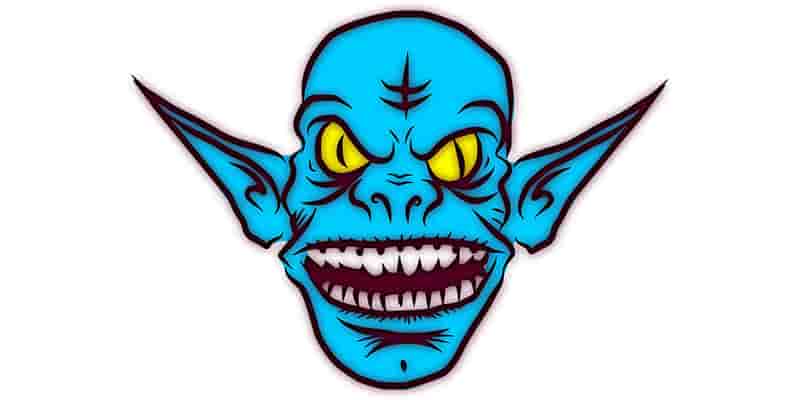
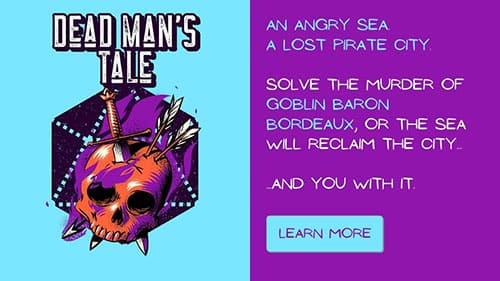
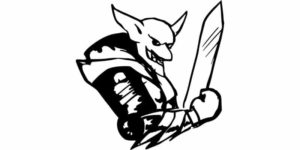
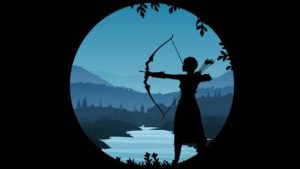
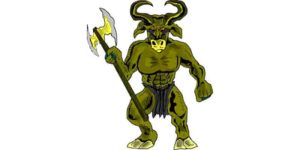
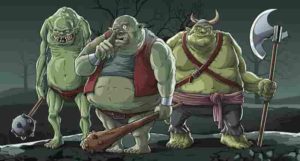
Up up up, good